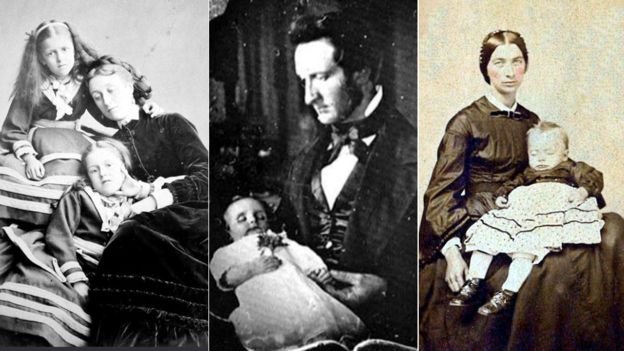In the victorian era it was popular for people to photograph relatives after they had died often placing them in lifelike poses

The Victorian Era: A Glimpse into a Morbid Photography Trend

In the 19th century, during the Victorian era, photography underwent a significant transformation. With the invention of the camera, capturing moments became more accessible than ever before. However, one peculiar trend emerged during this period that may astonish and intrigue modern-day observers. It was a common practice to take photographs of deceased relatives, and what sets these images apart is the lifelike poses in which the deceased were often placed.

This peculiar cultural phenomenon, known as post-mortem photography, served as a memento mori—a reminder of the fleeting nature of life. It was born out of a fusion between mourning rituals and advances in photographic technology. Post-mortem photography allowed grieving Victorians to preserve a physical image of their loved ones, even after death had claimed them. It provided a sense of comfort and served as a tangible connection to the deceased.
While it may appear morbid to us today, post-mortem photography held a significant emotional and cultural value during the Victorian era. The practice peaked between the 1840s and 1880s, coinciding with the popularity and accessibility of photography. It was readily embraced by both the working class and the upper echelons of society, serving as a testament to its prevalence at the time.
Despite its prevalence, the realism captured in these post-mortem photographs often veered into the uncanny valley. Lifelike facial expressions were achieved by the meticulous arrangement of the deceased, often seated or propped up, and sometimes surrounded by family members. This staging aimed to simulate a sense of vitality and bring a semblance of life to the departed.
Post-mortem photographs were not limited to adults; children were also frequently captured in the same manner. These poignant images reflect the mourning process and the importance of family ties in Victorian society. Bereaved parents, eager to commemorate the fragility of life, often draped their children over their laps or cradled them in their arms. The images captured the innocence and vulnerability of childhood, etching memories into the hearts of grieving parents.
The prevalence of post-mortem photography declined as the 20th century approached. With improved healthcare and changing social attitudes towards death, the practice gradually fell out of favor. Death became less entrenched in daily life, and the association with mourning became less fervent. The rise of snapshot photography, with its focus on capturing joyful moments, further relegated post-mortem photography to a distant memory.
Though the Victorian era may seem distant, the remnants of post-mortem photography serve as a reminder of how cultures have evolved over time. The images, at once captivating and slightly unsettling, grant us a glimpse into the rituals and emotions of a bygone era. They unearth the intricate ways in which societies cope with loss and illustrate the powerful role that photography played in capturing life’s fleeting moments.
Source: BBC
Tags
Share
Related Posts
Quick Links
Legal Stuff

